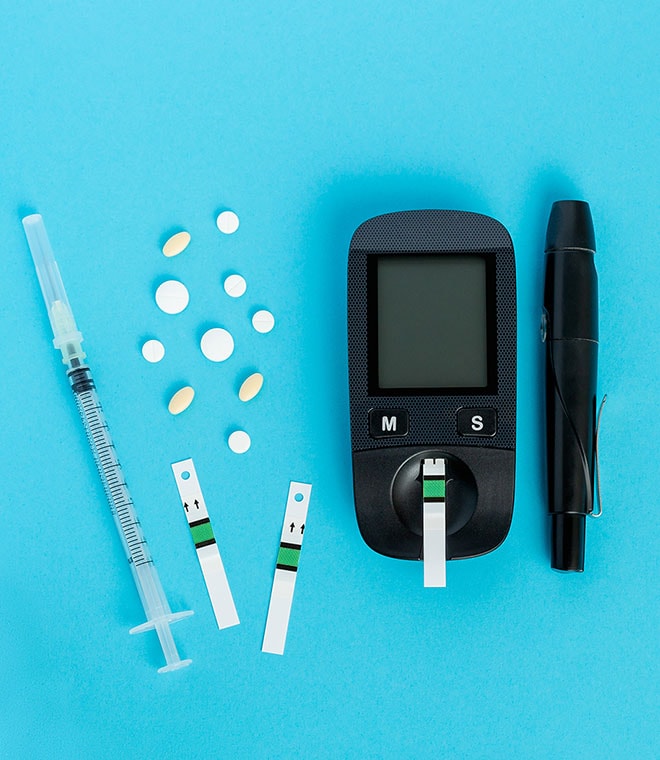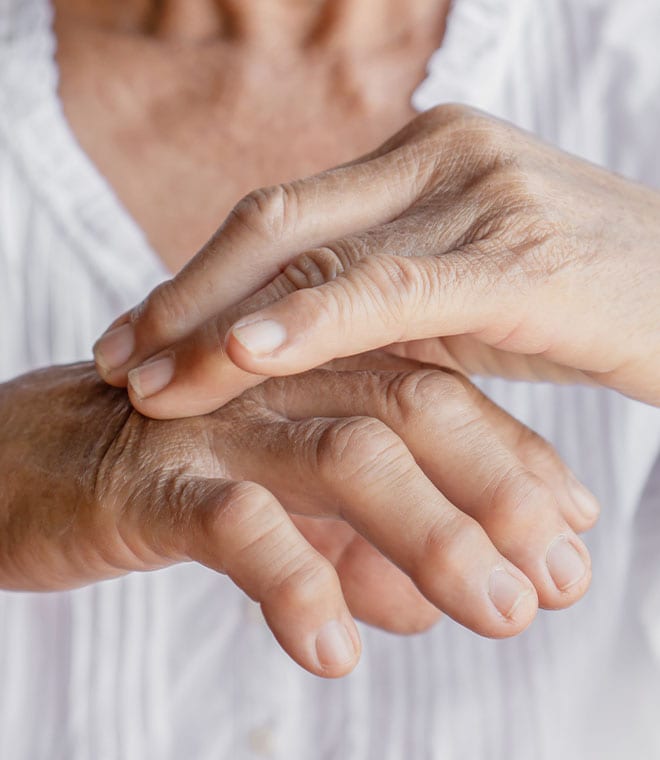Health
What are diabetic socks?
By Jenilee Matz, MPH Apr 22, 2024 • 7 min
Caring for your feet is important if you have diabetes. Chronic high blood sugar levels can lead to diabetic neuropathy (nerve damage), which can cause you to lose the ability to feel pain, heat or cold in your feet, legs, hands or arms, but it usually starts in your feet. This can make it difficult to tell if your foot is injured. Elevated blood sugar levels can also affect the blood vessels and cause circulation problems, possibly reducing blood flow to your feet. This can slow the healing of sores and blisters, which can lead to an infection or ulceration. Poor circulation can also cause fluid retention in your feet and legs.
To reduce your risk of foot-related complications associated with diabetes, your healthcare provider will likely tell you to check your feet regularly and take precautions to protect your feet. This may involve wearing special socks, such as diabetic stockings or diabetic compression socks.
What do diabetic socks do?
Diabetic socks are simply socks made to guard your feet. They're designed with protective features, such as:
- Thicker material and more cushioning at the heel and ball of your foot. The thicker material can help reduce pressure on areas of your feet that bear a lot of weight. The extra padding can help protect your feet from injury to the skin if a small rock gets into your shoe, for instance.
- Moisture-wicking fabric. Sweat- or moisture-wicking material pulls moisture away from your feet and onto the outer layer of the socks. This helps keep your feet dry, decreasing the chance of infections. Moisture-wicking technology can also keep your feet from getting cold if you're in cold weather.
- Light colors. White or light-colored socks can allow you to easily see if you're bleeding or have a draining wound on your foot.
- Seamless toes. Seams can irritate the skin, leading to blisters and wounds. Many diabetic socks don't contain seams or have nonirritating seams.
- Nonelastic fibers. Regular socks contain elastic to help them stay in place, but this design can further constrict blood flow for people with diabetes. Your socks may be considered too tight if you see a line on your skin after you remove them. Diabetic socks are often made without elastic.
Diabetic socks vs. compression socks
Diabetic socks are comfortable socks made to protect your feet from moisture, added pressure and injuries, such as blisters and sores. Compression socks are tightly knit, close-fitting socks designed to lessen fluid buildup in the lower legs and feet in people with circulation problems.
Benefits of compression socks for diabetes
Your healthcare provider may recommend compression socks or stockings if you have circulation problems that cause your feet and legs to swell. Compression socks can help move fluid back to your blood vessels and keep blood from pooling in your feet and legs. Compression socks with a small amount of compression are sold without a prescription. However, stronger compression socks may be prescribed by your healthcare provider and require professional fitting.
Swelling often progresses throughout the day, so it's helpful to put compression socks on first thing in the morning, before or soon after you get out of bed. If you can't put them on before getting up, and your feet swell, return to bed or a chair and elevate your feet for several minutes before you put on compression socks. Wearing them all day can also help reduce fluid buildup as the day goes on. Remove your compression socks before you go to sleep unless your healthcare provider tells you to sleep with them on.
Do you need diabetic socks?
There haven't been many evidence-based studies on the effectiveness of diabetic socks. According to the American Diabetes Association, people with diabetes who don't have foot problems can often just wear any socks they find comfortable. Choose socks that fit well, aren't too tight, don't lump and have no seams or nonirritating seams. If you're at risk for foot ulcers, your healthcare provider may recommend that you wear densely padded socks to reduce pressure on your feet. If you're physically active, your provider may suggest that you wear padded acrylic socks during intense exercise to decrease moisture and lower the chance of blisters.
Talk to your healthcare provider about what type of socks best suit your needs. Together, you can decide if you should wear diabetic socks. You can find a variety of diabetic socks for diabetic socks for men and diabetic socks for women at Walgreens.
Clinically reviewed and updated April 2024.


